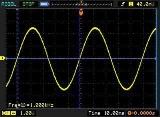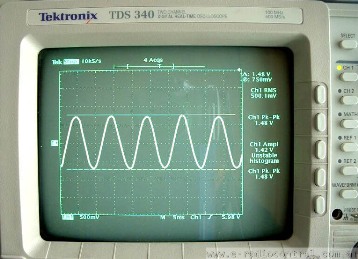Period and frequency of alternating current

This term «alternating electric current» should be understood as a current that changes over time in any way, in accordance with the concept of «variable quantity» introduced in mathematics. In electrical engineering, however, the term «alternating electric current» came to mean an electric current imputed in a direction (as opposed to electric current with a constant direction) and therefore in magnitude, since it is physically impossible to imagine changes in electric current in direction without corresponding changes in magnitude.
The movement of electrons in a conductor, first in one direction and then in the other, is called an alternating current oscillation. The first oscillation is followed by the second, then the third, etc. When the current in the wire oscillates around it, a corresponding oscillation of the magnetic field occurs.
The time of one oscillation is called the period and is denoted by the letter T. The period is expressed in seconds or in units of fractions of a second.These are: a thousandth of a second is a millisecond (ms) equal to 10-3 s, a millionth of a second is a microsecond (μs) equal to 10-6 s, and a billionth of a second is a nanosecond (ns) equal to 10 -9 s.
Characteristic important quantity alternating current, is the frequency. It represents the number of oscillations or the number of periods per second and is denoted by the letter f or F. The unit of frequency is the hertz, named after the German scientist G. Hertz and abbreviated to the letters Hz (or Hz). If one complete oscillation occurs in one second, then the frequency is equal to one hertz. When ten vibrations occur within a second, the frequency is 10 Hz. Frequency and period are reciprocal:

and

At a frequency of 10 Hz, the period is 0.1 s. And if the period is 0.01 s, then the frequency is 100 Hz.
Frequency is the most important characteristic of alternating current. Electrical machines and alternating current devices can only operate normally at the frequency for which they are designed. Parallel operation of electric generators and stations in a common network is possible only at the same frequency. Therefore, in all countries the frequency of alternating current produced by power plants is standardized by law.
In an AC electrical network, the frequency is 50 Hz. The current flows fifty times a second in one direction and fifty times in the opposite direction. It reaches its amplitude value a hundred times per second and becomes equal to zero a hundred times, that is, it changes its direction a hundred times when it crosses the zero value. Lamps connected to the network go out a hundred times a second and light up brighter the same number of times, but the eye does not notice this due to visual inertia, that is, the ability to retain the received impressions for about 0.1 s.
When calculating with alternating currents, they also use the angular frequency, which is equal to 2pif or 6.28f. It should not be expressed in hertz, but in radians per second.
With the accepted frequency of industrial current of 50 Hz, the maximum possible speed of the generator is 50 r / s (p = 1). Turbine generators are built for this number of revolutions, i.e. generators driven by steam turbines. The number of revolutions of the hydraulic turbines and the hydrogen generators driven by them depends on the natural conditions (primarily on the pressure) and fluctuates within wide limits, sometimes decreasing to 0.35 — 0.50 revolutions / sec.
The number of revolutions has a great influence on the economic indicators of the machine — dimensions and weight. Hydro generators with a few revolutions per second have an external diameter 3 to 5 times larger and weigh many times more than turbine generators with the same power with n = 50 revolutions. In modern alternators, their magnetic system rotates, and the wires in which EMF is induced are placed in the stationary part of the machine.
Alternating currents are usually divided by frequency. Currents with a frequency of less than 10,000 Hz are called low-frequency currents (LF currents). For these currents, the frequency corresponds to the frequency of the various sounds of the human voice or musical instruments, and therefore they are otherwise called audio frequency currents (except for currents with a frequency below 20 Hz, which do not correspond to audio frequencies). In radio engineering, low-frequency currents are widely used, especially in radiotelephone transmission.
However, the main role in radio communication is played by alternating currents with a frequency above 10,000 Hz, called high-frequency currents or radio frequencies (HF currents).To measure the frequency of these currents, the following units are used: kilohertz (kHz), equal to a thousand hertz, megahertz (MHz), equal to a million hertz, and gigahertz (GHz), equal to a billion hertz. Otherwise, kilohertz, megahertz and gigahertz stand for kHz, MHz, GHz. Currents with a frequency of hundreds of megahertz and higher are called ultrahigh or ultrahigh frequency currents (UHF and UHF).
Radio stations operate using HF alternating currents with a frequency of hundreds of kilohertz and higher. In modern radio technology, currents with a frequency of billions of hertz are used for special purposes, and there are devices that can accurately measure such ultra-high frequencies.

